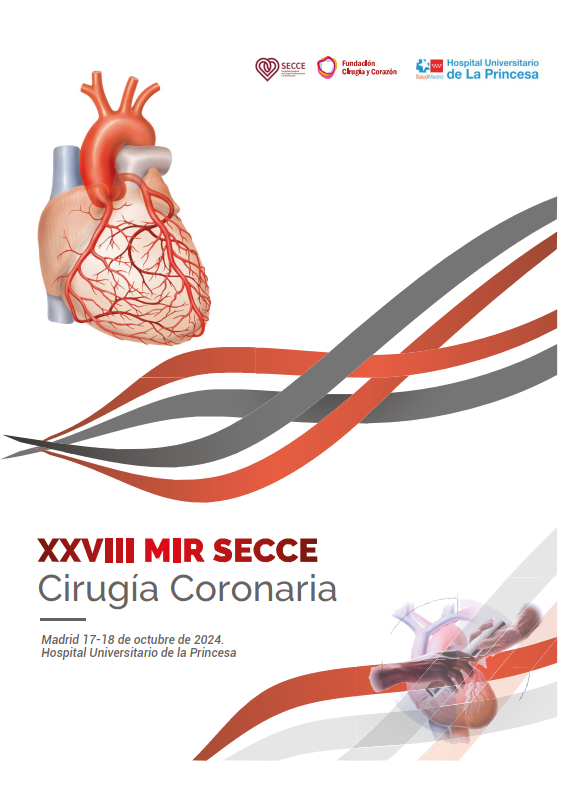Intraoperative TEE is an essential tool in cardiac surgery, allowing continuous monitoring and real-time clinical decision-making. Recent evidence shows that its use is associated with reduced mortality and improved clinical outcomes. However, recommendations for its use vary among scientific societies. According to the most recent data from the Society of Thoracic Surgeons (STS), TEE was used in 73% of cardiac surgeries, with a progressive increase from 71% in 2017 to 75% in 2021.
TEE enables real-time assessment of cardiac function, valvular anatomy, and great vessels, directly influencing intraoperative decisions. Its applications include:
- Immediate detection and management of cardiogenic causes of hypotension.
- Identification of iatrogenic abnormalities related to cannulation or surgical manipulation.
- Evaluation of changes in ventricular function in response to inotropic agents or other interventions.
- Detection of segmental wall motion abnormalities suggestive of incomplete revascularization, suboptimal myocardial protection, or ischemic complications.
- Monitoring of intracardiac air clearance and diagnosis of air embolism.
TEE also provides additional information that may lead to modifications in the surgical plan, such as:
- Detection of aortic calcification.
- Identification of intracardiac thrombi.
- Assessment of new ventricular or valvular dysfunction compared with preoperative evaluation.
- Diagnosis of intraoperative aortic dissection.
Furthermore, it assists in guiding the insertion of intracardiac or intravascular catheters and devices, and in the immediate evaluation of surgical results, including:
- Functional assessment of valve repairs or replacements, including paravalvular leakage or residual regurgitation.
- Verification of complete left atrial appendage closure.
- Confirmation of adequate shunt closure.
- Detection of residual intracardiac masses after surgical resection.
- Identification of significant pleural or pericardial effusions.
The intraoperative use of TEE has a direct clinical impact, particularly in coronary artery bypass grafting (CABG), valvular, and aortic surgery, leading to a significant reduction in morbidity and mortality, especially in patients with intermediate or high surgical risk.
The article also highlights specific considerations for TEE according to the type of cardiac surgery:
- Coronary surgery: enables ventricular function assessment and identification of valvular abnormalities requiring intervention.
- Valvular surgery: facilitates evaluation of valvular function, repair success, detection of leaks, and determination of gradients.
- Aortic surgery: provides high-quality imaging across most of the aorta, allowing assessment of anatomy, detection of aortic pathology such as dissection or intramural hematoma, and guidance for cannulation. It is also useful in endovascular procedures, enabling visualization of guidewires and stents.
- Orthotopic heart transplantation: allows immediate assessment of biventricular function and detection of significant tricuspid regurgitation associated with right ventricular dysfunction, with major prognostic relevance.
- Initiation of venoarterial ECMO (VA-ECMO): essential for proper inotropic titration, evaluation of left ventricular unloading, diagnosis of procedure-related complications, and optimization of device flow—for example, assessing cannula positioning or the mixing point of flows (Harlequin phenomenon).
From an economic standpoint, routine intraoperative TEE use has proven to be highly cost-effective, associated with better long-term outcomes, reduced incidence of stroke and cardiac events, and lower mortality, thereby improving patient quality of life.
Finally, the article underscores the emerging role of artificial intelligence (AI) and its potential integration into the field of TEE, which could further enhance its diagnostic and therapeutic utility.
COMMENTARY:
This scientific statement provides an updated analysis of current evidence regarding the role of intraoperative TEE in adult cardiac surgery. Although further research is needed to standardize its use, TEE clearly represents an invaluable tool in most cardiac operations. Its capacity to deliver real-time information, its cost-effectiveness, and its demonstrated impact on clinical outcomes and patient prognosis justify a broad recommendation for its use across surgical contexts.
The article emphasizes TEE’s ability to identify previously undiagnosed findings or intraoperative complications, allowing modifications of the surgical strategy in a significant number of cases. This is particularly relevant in myocardial revascularization procedures, where TEE may reveal unrecognized valvular disease not detected in preoperative transthoracic echocardiography (TTE).
TEE also serves as a cornerstone for risk stratification, hemodynamic assessment, and fluid management optimization in cardiac surgery, especially in high-risk patients.
Importantly, this statement fills the gap left since the publication of the last clinical practice guidelines, a period during which intraoperative TEE practice has evolved considerably. Its application should be considered across the full spectrum of cardiac surgery, and professional societies should update their recommendations to reflect current practice and emerging indications.
REFERENCE:
Rong LQ, Shore-Lesserson L, Belani K, Faloye A, García-Sayan E, Lawton J, et al. Considerations of intraoperative transesophageal echocardiography during adult cardiac surgery: a scientific statement from the American Heart Association. Circulation. 2025; 152: 129 – 145. DOI: 10.1161/CIR.0000000000001342



